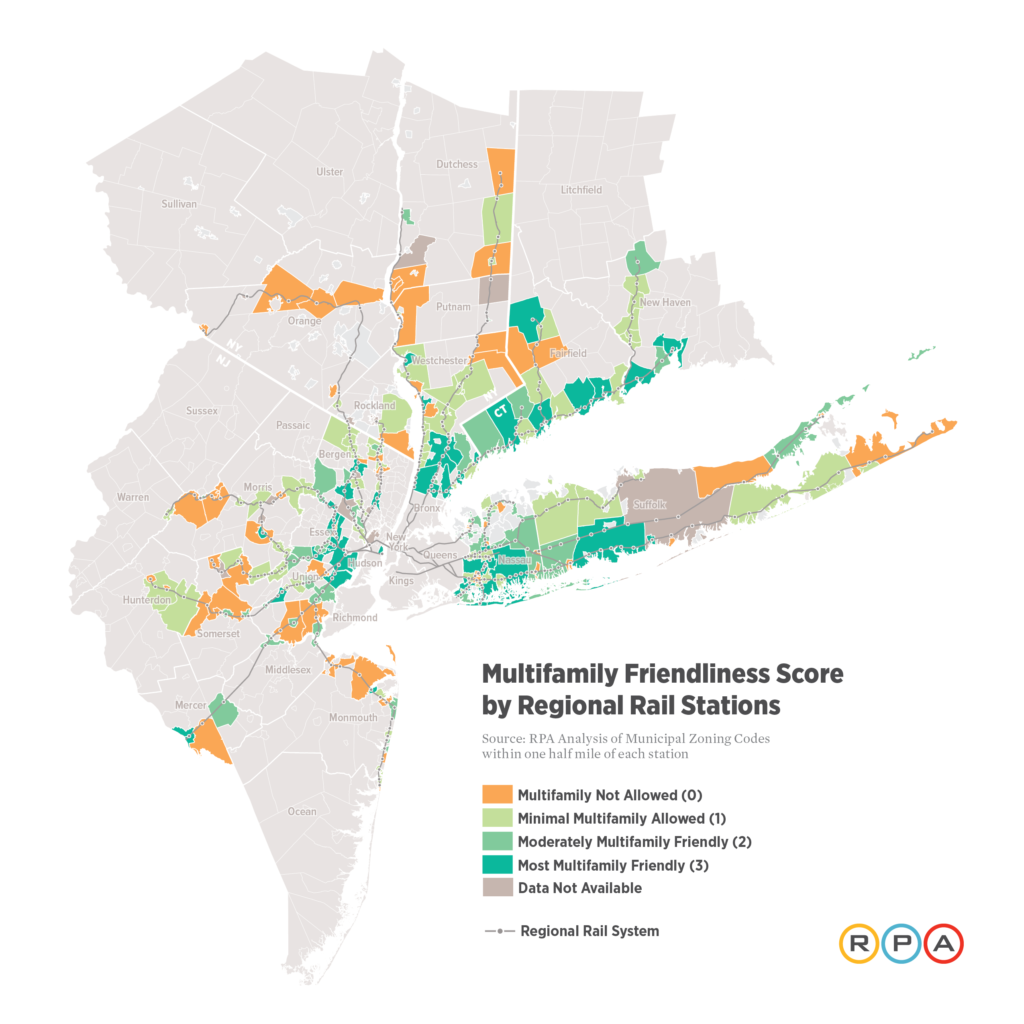Nearly 25 years after Peter Calthorpe coined the phrase “transit-oriented development,” many of the tri-state area’s suburbs are still falling short of encouraging the development of mixed-use, walkable communities that residents of our region want and need.
In a new RPA report, Untapped Potential: Opportunities for Affordable Homes and Neighborhoods Near Transit, authors Moses Gates, Sarah Serpas, Kellan Cantrell and Renae Widdison take a look at communities around the region’s rail stations and examined the friendliness of their zoning codes for transit-oriented development.
What they found was not encouraging. Today more than half of the regional rail stations that RPA examined don’t have land use regulations that support TOD, despite having the necessary infrastructure to make mixed-use, multi-family development work. Most either allow for very limited multi-family development or none at all. 20% of the rail stations outside of New York City with access to 200,000 jobs or more only allow for low-density, single-family development. This limits the amount of affordable, accessible housing available for our region’s residents. At a time when households across the region are spending over 50% of their income on housing and transportation, this is simply unacceptable.

The good news is that the ways to unlock hundreds of thousands of new units of affordable housing near rail stations are relatively simple. In the latest recommendations released of the forthcoming Fourth Regional Plan, the report also spells out simple steps our suburbs can take to address lack of affordability and congestion through transit-oriented development.
At the most basic level, municipalities can allow and encourage multifamily, mixed-use development near train stations by changing their zoning laws. The rewards that these changes can reap are evidenced throughout the region, in places like New Rochelle, Patchogue, and South Amboy, where municipalities have created visions for transit-oriented development and changed their zoning laws to accommodate new walkable, mixed-use, mixed-income neighborhoods.
The authors also point out that the parking lots surrounding our regional rail stations have huge potential for future development, as autonomous vehicles and shared car services decrease the need for these lots. Instead of letting these parking lots lie vacant, we can build well over 250,000 new homes in complete neighborhoods with enough shops, offices, community centers, parks and schools to both support this new growth, and benefit the surrounding communities as well
The report also recommends actions that states and the federal government can make to help these municipalities become more walkable and mixed-use, including reforming the financing regulations that currently inhibit more mixed-use development. To ensure our walkable and transit-rich communities stay affordable to residents of all incomes, RPA also calls for minimum affordable housing requirements across all three states, along with affordability requirements for future transit-oriented development.
Learn more about the research and recommendations here.
